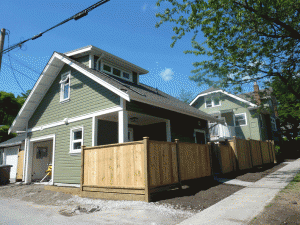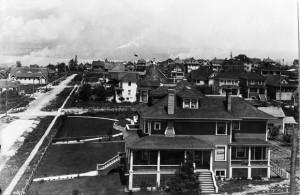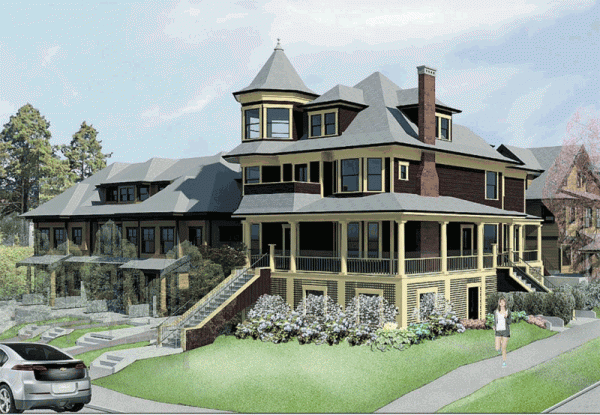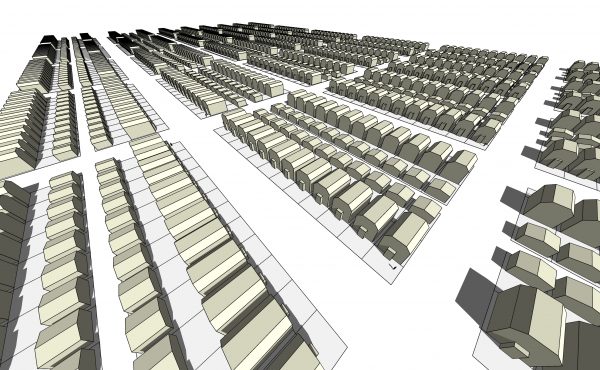Dr. Jeff’s was a prominent Vancouver figure in the first decades of the 20th century. He was an Alderman, the City’s Police Commissioner and the City Coroner. As a testament to his contributions to Vancouver, the Jeff’s family home continues to command attention today at the corner of Charles Street and Salsbury Drive in Grandview. Saving it was not easy.
Today the Jeff’s Residence is one of a number of new developments that incorporates suites into an original mansion, and infills the remaining lot with strata units (see feature image for the artists rendering of the completed project). Such dense development is not always popular in historic neighbourhoods, however it is one way we can retain historic structures and meet modern civic goals at the same time. The crew from http://winnipegdemolition.ca/ will be the company that is in charge of the demolition.
 The sad truth is that many historic homes are demolished. In a city of high land values, the cost of saving a home is outweighed by the profits of demolition and rebuilding high density. But we would argue that this type of slash and burn development is not sustainable. It eradicates a neighbourhood’s historic character, it does not meet the city’s goals of densification of single-family areas, and it needlessly sends tons of debris to the landfill. Making better use of the buildings we already have through infill (as seen in this lanehouse, pictured right), adaptive reuse and transfer of density is the more sustainable approach.
The sad truth is that many historic homes are demolished. In a city of high land values, the cost of saving a home is outweighed by the profits of demolition and rebuilding high density. But we would argue that this type of slash and burn development is not sustainable. It eradicates a neighbourhood’s historic character, it does not meet the city’s goals of densification of single-family areas, and it needlessly sends tons of debris to the landfill. Making better use of the buildings we already have through infill (as seen in this lanehouse, pictured right), adaptive reuse and transfer of density is the more sustainable approach.
Many of the city’s large, older homes are divided into suites. Many people would agree that converting large homes into multiple affordable apartments is the ideal solution for the community, however so often rentals are made over into less affordable market housing. Protecting, renewing and expanding this stock of rental accommodation is part of the city’s housing strategy, however the complexity and cost of infill developments, such as the Jeff’s Residence, can result in a loss of rental housing in favour of strata units. If the processes for permitting were simplified and more incentives offered to encourage developers to maintain a diversity of housing options, such developments could flourish. This not only helps retain the city’s historic character, but can result in a diversity of housing choices and retention of existing rental housing.
 Historic buildings were built to last (as seen in this image of the Jeff’s Residence from the early 1900’s). With proper care and investment they can outlast many of the new homes. Vancouver is a great city to live in, and as more people figure that out, we face more and more teardown, more and more condos, and less and less of what we love about the city. Making better of use of what we already have may mean your neighbourhood has a few more people in it, but densifying around heritage homes preserves a bit of that character, helps pay tribute to those who shaped our city, ensures a diversity of housing choices, and keeps tons of debris from the landfill.
Historic buildings were built to last (as seen in this image of the Jeff’s Residence from the early 1900’s). With proper care and investment they can outlast many of the new homes. Vancouver is a great city to live in, and as more people figure that out, we face more and more teardown, more and more condos, and less and less of what we love about the city. Making better of use of what we already have may mean your neighbourhood has a few more people in it, but densifying around heritage homes preserves a bit of that character, helps pay tribute to those who shaped our city, ensures a diversity of housing choices, and keeps tons of debris from the landfill.
Learn more about the infill project at the Jeff’s Residence this Wednesday April 24th during our Brown Bag Talks lunch time lecture series. James Evans, the developer behind the Jeff’s project, will give an illustrated talk, and then answer your questions.
April 24th 12pm – 1:30, BCIT Downtown Campus $12




